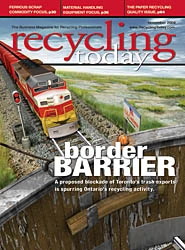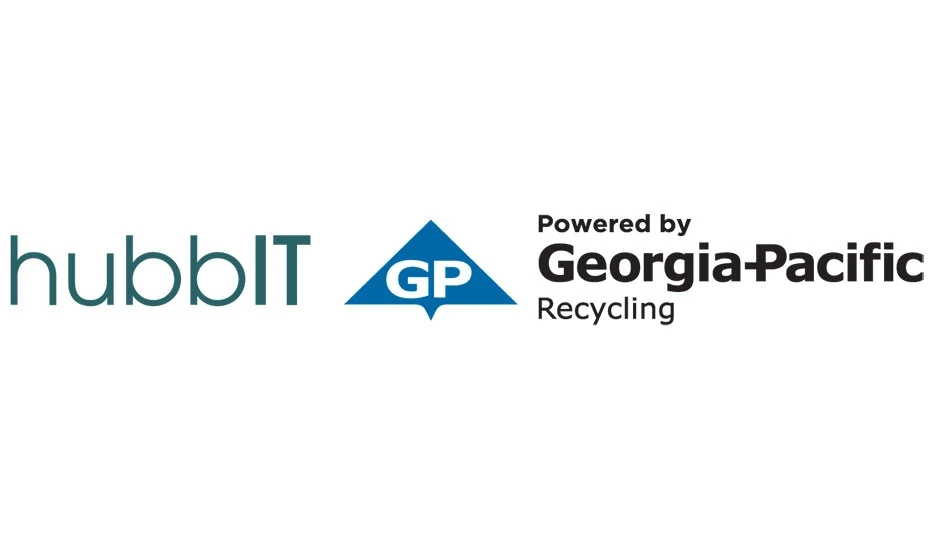The year 2003 will be remembered as a successful year. Thanks to millions of consumers, thousands of municipal recycling programs, state recycling organizations, corporations, government agencies and schools across the country, we achieved a 50 percent paper recovery rate. A total of 49.3 million tons of paper were recovered for recycling in the U.S., a significant milestone in paper recycling history.
This recovery represents an increase of 69 percent since 1990, when only 33.5 percent of the paper consumed in the United States was recycled. Currently, Americans recover approximately 339 pounds of paper for every person in the United States, up from 233 pounds per person in 1990.
More than 80 percent of all paper mills in the United States use recovered paper to make their products, representing 37 percent of the raw material used to make new paper and paper products.
|
U.S. PAPER FACTS |
|
• In 2003 Americans recovered 49.3 million tons of paper for recycling. • In 2003 recovery of old corrugated containers (OCC) rose to a record • Americans recycle 270 million pounds of paper every day. • More than 37 percent of the raw material used to make new paper • Nearly 80 percent of all U.S. paper makers use recovered fiber to make • Every ton of paper recovered for recycling saves 3.3 cubic yards of • Currently, more paper is recovered for recycling than is landfilled. By |
Still, greater collection of more high-quality papers is necessary to ensure the continued production of new recycled-content paper products.
MORE IMPORTANT THAN EVER. Globally, the paper industry has invested billions of dollars in equipment throughout the past decade in order to recover larger volumes of paper.
As a result of this investment, industry research indicates that consumption of recovered paper will grow globally by 8 million tons per year for at least the next six years.
Recycling paper makes good economic sense, as recovered paper has become an internationally traded commodity used in mills worldwide to make new paper. The development of new recycling mills throughout the past few years has led to dramatic increases in the demand for recovered paper in both the domestic and export markets.
This supply will be squeezed by an anticipated 50 percent surge in U.S. exports of recovered paper. Most of that demand will come from Asia, particularly China and India.
Paper Tigers. Whether in Beijing, New Delhi, Shanghai or Bombay, local consumers are flocking to stores that you can find in almost any American shopping mall—Talbot’s, Ralph Lauren, The Gap, McDonalds, Coca-Cola, KFC, Gucci and so on.
This new demand, economist Woody Brock says, can be ascribed to "Chindia," a description of China’s and India’s combined emerging middle class of 600 million consumers. It’s a market the size of the European Union and the United States together—a huge emerging middle class that is driving consumption of all commodities—including recovered paper.
The Economist magazine agrees, saying recently that "China has witnessed probably the most dramatic burst of wealth creation in human history."
Sixty percent of the recovered paper consumed in Asia is supplied from the United States.
THE "Q" FACTOR. Dr. Peter Drucker has said, "Customers pay only for what is of use to them and gives them value. Nothing else constitutes quality." This is a timely thought as we continue to grow our collections to meet demand. The quality bar has been raised.
What are we talking about?
We’re talking about contamination of recovered paper with non-fibrous materials like glass, plastics, metal or just plain garbage.
As a paper maker, it is extremely difficult to make high quality recycled content products with growing levels of contamination.
Commingled residential collections are starting to increase. However, we are losing a percentage of these recyclables to contamination. When these materials are processed, 17 percent is being rejected and winds up in landfills as a result. This runs counter to the original environmental diversion goals and actually increases the amount of material landfilled. This also works against the economic infrastructure that’s been in place, because it drives up costs.
Unless the trend toward commingling is accompanied by better education and more effective processing, we risk undermining the hard fought gains of the last two decades.
Your collection efforts benefit your community and our world. Don’t lose sight of this!
Weyerhaeuser is one of the largest paper recyclers in the world and applauds the efforts of everyone, including the 9,000 cities that deliver recycling services to their customers. We need to keep this forward momentum going.
|
JAPANESE FIRM OPENS PAPER RECYCLING PLANT IN CHINA Sponsored Content Labor that WorksWith 25 years of experience, Leadpoint delivers cost-effective workforce solutions tailored to your needs. We handle the recruiting, hiring, training, and onboarding to deliver stable, productive, and safety-focused teams. Our commitment to safety and quality ensures peace of mind with a reliable workforce that helps you achieve your goals. Sponsored Content Labor that WorksWith 25 years of experience, Leadpoint delivers cost-effective workforce solutions tailored to your needs. We handle the recruiting, hiring, training, and onboarding to deliver stable, productive, and safety-focused teams. Our commitment to safety and quality ensures peace of mind with a reliable workforce that helps you achieve your goals. |
|
Marubeni Corp., headquartered in Japan, has announced plans to set up a paper recycling joint venture in China that includes nine paper material wholesalers. The company decided to open the plant as a response to the surging demand for recovered fiber in China. The joint venture will be located in China's Jiangsu Province. It is expected to be operational by November. The plant will collect, import and process used paper as well as sell the processed material to paper manufacturers along the Yangtze River. The venture hopes to acheive an annual volume of 100,000 tons. |
We need every city in North America that provides recycling services to encourage residents to increase their participation in local programs through correct recycling practices if we are going to meet the global demand for quality paper. Short of this, we are missing an environmental and economic development opportunity.
We estimate there are approximately 40 million tons of paper available in the United States that could be recycled. Those of us in the paper industry want to work closely with all of you to recover this paper.
Greater recovery of these paper products will help to ensure a steady, reliable supply of recovered paper for the world’s paper manufacturers.
A RECYCLING SUCCESS STORY. For our industry, recycling truly has been the great American resource conservation success story.
Stop most people on the street and ask them if recycling is important in their lives, and most will say that it is and that recycling of any sort is the right thing to do.
Future growth is within our grasp, but it requires increasing the recycling rate while maintaining or improving quality. If we can do this, we will increase jobs and economic growth for Americans while expanding greatly the environmental benefits of recycling. This growth must adhere to why local governments got into the recycling arena to begin with: to benefit the environment and the economy, to conserve resources, to reduce pollution and to divert materials from the solid waste stream.
Let’s make the sequel to this story. If we can do these simple things, we can help to extend the great American conservation success story.
And this, my fellow recyclers, is certainly a very good thing to do.
The author is vice president of recycling at Weyerhaeuser Co. and is also chairman of the recovered fiber committee organization within the American Forest and Paper Association. He can be contacted at mark.starnes@weyerhaeuser.com
Get curated news on YOUR industry.
Enter your email to receive our newsletters.

Explore the November 2004 Issue
Check out more from this issue and find your next story to read.
Latest from Recycling Today
- ReMA opposes European efforts seeking export restrictions for recyclables
- Fresh Perspective: Raj Bagaria
- Saica announces plans for second US site
- Update: Novelis produces first aluminum coil made fully from recycled end-of-life automotive scrap
- Aimplas doubles online course offerings
- Radius to be acquired by Toyota subsidiary
- Algoma EAF to start in April
- Erema sees strong demand for high-volume PET systems






